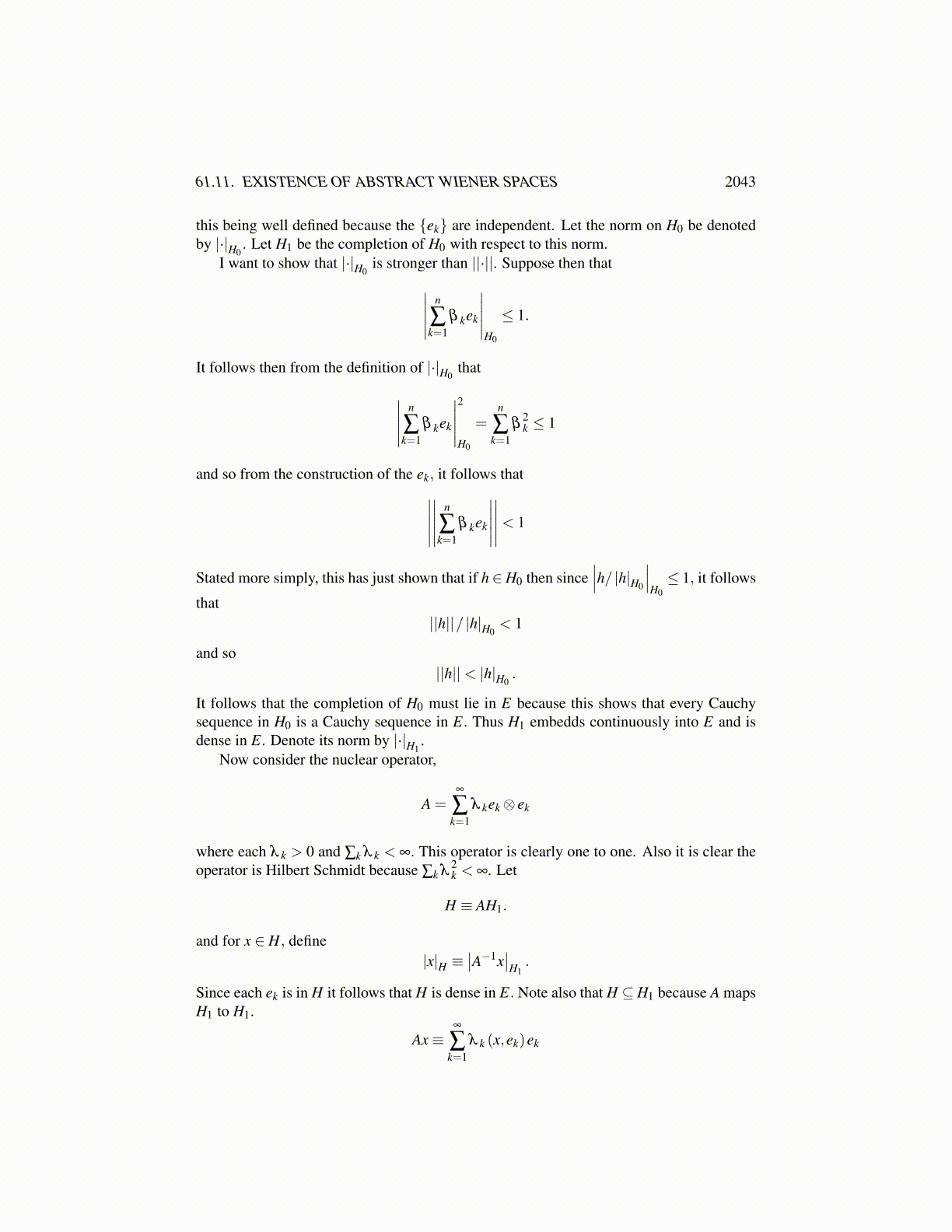
61.10. WHITE NOISE 2043
61.10 White NoiseIn an abstract Wiener space as discussed above there is a Gaussian measure, µ definedon the Borel sets of B. This measure is the law of a random variable having values in Bwhich is the limit of a subsequence of a sequence of partial sums. I will show here that thesequence of partial sums also converges pointwise a.e.
Now with this preparation, here is the theorem about white noise.
Theorem 61.10.1 Let (i,H,B) be an abstract Wiener space and {ek} is a complete or-thonormal sequence in H. Then there exists a Gaussian measure on the Borel sets of B.This Gaussian measure equals L (S) where S (ω) is the a.e. limit of the sequence of partialsums,
Sn (ω)≡n
∑k=1
ξ k (ω)ek
for {ξ k} a sequence of independent random variables which are normal with mean 0 andvariance 1, defined on a probability space, (Ω,F ,P)
Proof: By Corollary 61.9.15 there is a subsequence,{
Spn
}of these partial sums which
converge pointwise a.e. to S (ω). However, this corollary also states that
P({
ω ∈Ω :∣∣∣∣Sk (ω)−Spn (ω)
∣∣∣∣> 2−n})< 2−n
whenever k > pn and so by Lemma 59.15.6 the original sequence of partial sums also con-verges uniformly of a set of measure zero. The reason this lemma applies is that ξ k (ω)ekhas symmetric distribution. This proves the theorem.
61.11 Existence Of Abstract Wiener SpacesIt turns out that if E is a separable Banach space, then it is the top third of an abstractWiener space. This is what will be shown in this section. Therefore, it follows from theabove that there exists a Gaussian measure on E which is the law of an a.e. convergentseries as discussed above. First recall Lemma 17.4.2 on Page 458.
Lemma 61.11.1 Let E be a separable Banach space. Then there exists an increasing se-quence of subspaces, {Fn} such that dim(Fn+1)−dim(Fn)≤ 1 and equals 1 for all n if thedimension of E is infinite. Also ∪∞
n=1Fn is dense in E.
Lemma 61.11.2 Let E be a separable Banach space. Then there exists a sequence {en} ofpoints of E such that whenever |β | ≤ 1 for β ∈ Fn,
n
∑k=1
β kek ∈ B(0,1)
the unit ball in E.